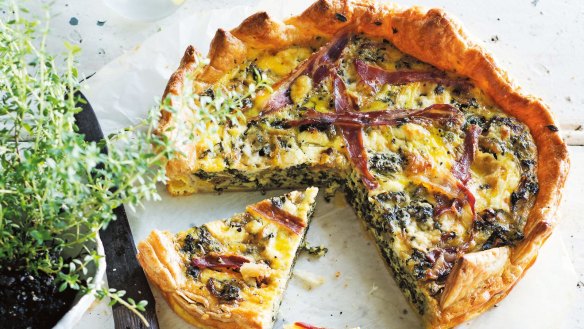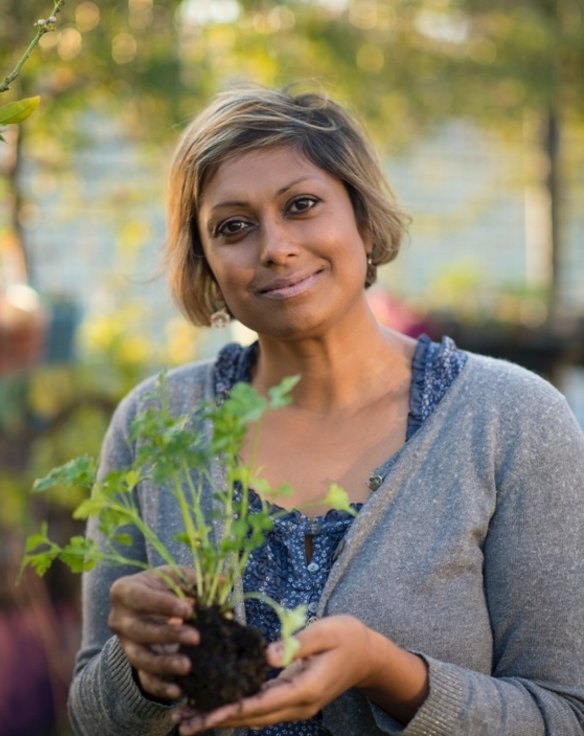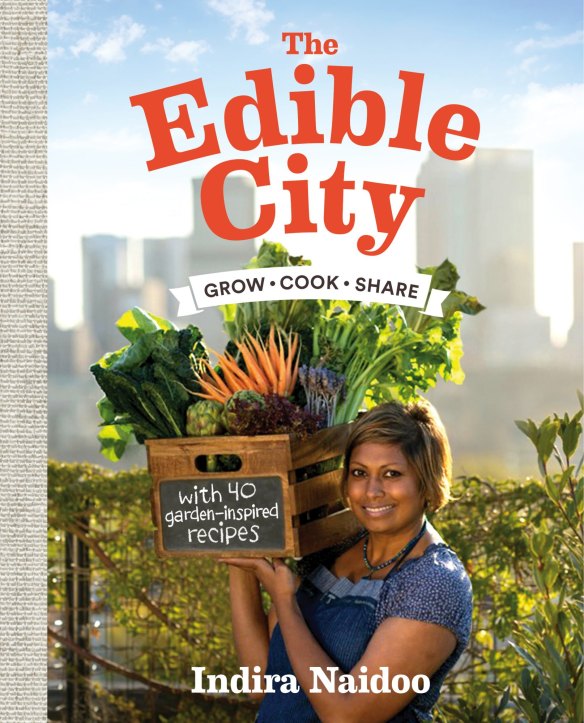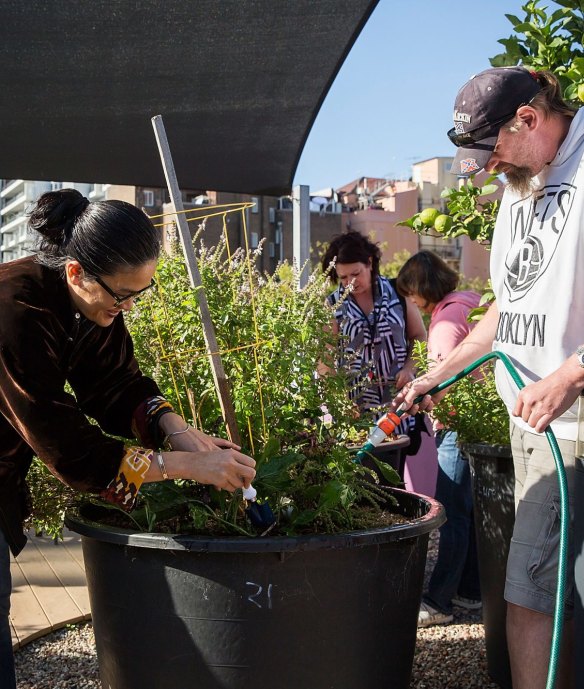Indira Naidoo: Feeding our cities through community gardens

In her new gardening cookbook, The Edible City, journalist and best-selling author Indira Naidoo meets the guerrilla gardeners converting derelict urban spaces into vegie patches to feed their communities.
It's a clear, chilly morning on Sydney's Wayside Chapel rooftop garden. Despite the cold, the vegetable garden is lush with crops. Thickets of lettuce, rocket, spinach, silver beet, and sorrel are bursting from their pots. I'm harvesting some fresh long-tongued Russian kale for a blue cheese, kale and prosciutto tart for lunch. It's one of the 40 recipes from my new book The Edible City and I'm keen to share it with the homeless gardeners I help to look after this inspiring community garden.
Despite our relative wealth and access to safe, affordable food, it's estimated that every day more than 1 million Australians do not have enough to eat. I see many of these poor souls at the Wayside Chapel – a church-run crisis centre in Sydney's Kings Cross that supports those struggling with homelessness, and drug and mental health issues. The Wayside distributes food vouchers and prepares subsidised meals in its cafe but barely meets a fraction of the demand.

With our supermarket shelves groaning under the weight of glistening produce from every season and almost every country, we're fooled into believing we live in a time of plenty. This is not the case.
According to The Australian Institute of Family Studies, (1995 Australian National Nutrition Survey and the Aboriginal and Torres Strait Islander Health Performance Framework data 2004-05) certain groups experience food insecurity at a higher rate than the general population (Browne, Laurence, & Thorpe, 2009; Burns, 2004).) It's our poor and socially marginalised – not surprisingly - who are hardest hit by food insecurity; Indigenous people make up 24 per cent of the "food poor"; unemployed people 23 per cent; single parent households 23 per cent; low-income earners 20 per cent; rental households 20 per cent; and young people 15 per cent.
The Wayside decided to tackle this inequality with an innovative solution; with no land on the ground to spare, it built a vegetable garden on the roof of its recently completed building extension. The 200-square-metre garden is contained in large waist-high recycled-plastic pots and, three years on, is providing free, organic, nutritious produce for the Wayside's homeless visitors.

It's also giving trainee gardeners important health and wellbeing skills. So successful has the community garden been that the Wayside's programs manager, Wendy Suma, has had four beehives installed, which are supplying Potts Point restaurant Billy Kwong with honey for Kylie Kwong's famous pork buns.
"For our homeless visitors it [the garden] has become an important green space away from the rough and tumble of street life," says Suma. 'It's beautiful and calming, better for the environment and we get to eat delicious produce.
"No one thinks of growing food on rooftops but it works a treat!"

Permission to build the rooftop garden required a lengthy process of council permits, state government grants, private donations and a final funding boost from the federal government. Every state and local council seems to have a different set of community garden building approvals to meet. Gardeners across the country have told me that bureaucracy is often the greatest hurdle they face.
The power of food gardens to revitalise urban communities has been inspiring to document.
In another of the plots I visit in my book, gardeners at the Turramurra Lookout Community Garden on Sydney's leafy upper North Shore transformed a disused park on a blighted stretch of highway into a thriving community garden that has a lengthy waiting list.
"We have gardeners of all ages - from kids to residents from the next-door nursing home," says John Dailey, the garden's manager. "Everything we grow tastes better than the stuff you can buy in the supermarket and soon we hope to be growing enough for a weekly market stall."
The Australian City Farms and Community Gardens Network has almost 600 community and city gardens on its nationwide register. You'll find these little patches squeezed into the most unlikely places - along freeways, behind churches, in schools, on balconies in office blocks and their numbers are growing.
Community gardening is defined as when a single plot of land is collectively gardened by a group of people. The concept has been around for decades but is experiencing a resurgence as concern grows about the chemicals in our food, the loss of farming land to mining and the impact of food transportation on climate change.
And if you think urban agriculture can only make a tiny contribution to our food production, think again.
The United Nations Food and Agricultural Organisation reports that 800 million people worldwide grow fruit and vegetables or raise animals in cities, producing an astonishing 15 to 20 per cent of the world's food.
There is a lot Australia can learn from the rest of the world. New York City, for example, has several rooftop farms – some covering 2½ acres, operating as commercial, for-profit enterprises.
In June 2016 I'll be taking a two-week food tour of the urban farms of Europe. We'll visit rooftop gardens with thriving aquaponics systems in Berlin, city farms with extensive chicken runs producing eggs in Vienna – even micro-herbs thriving under artificial lights in underground London railway tunnels.
Urban farming and community gardening will never replace broad-acre cropping. Even so, it can certainly make a greater contribution to our food system than many of us realise.
Whether these gardens can dramatically boost local food production or not, they are important outdoor classrooms where city-dwellers and nature can meet. Less concrete and tarmac; more happier, greener spaces.
As one of the gardeners I interviewed said: "City gardens are part of our ideal sense of what a community should be, so their value is priceless."
'The Edible City' by Indira Naidoo is published by Penguin Books Australia (Lantern) RRP $45.00
For more information about joining Indira Naidoo's urban garden tour of Europe in June 2016 contact Adventure World Travel on 1300 295 049.